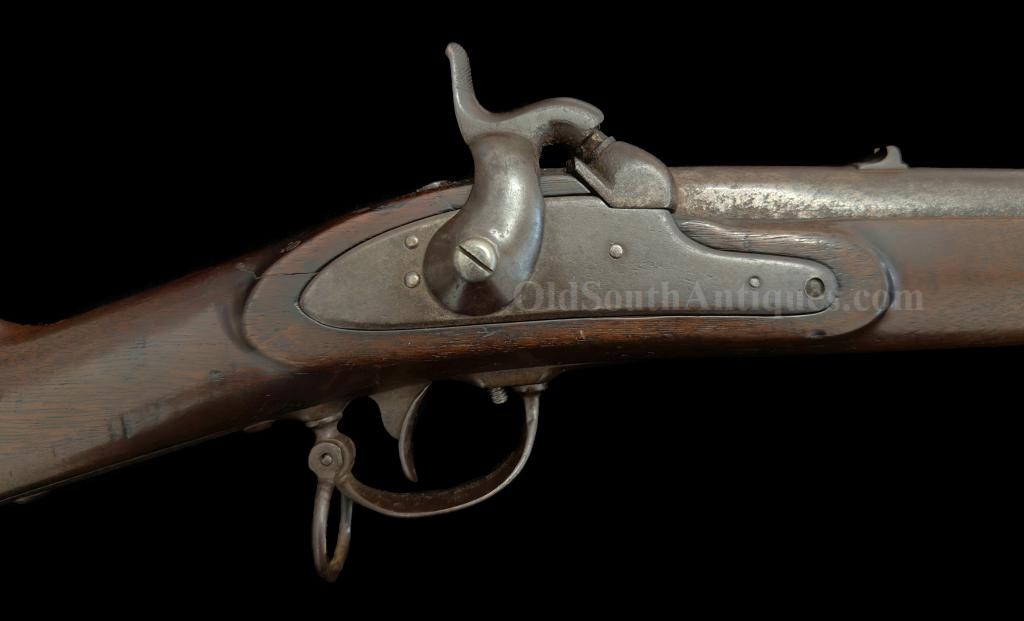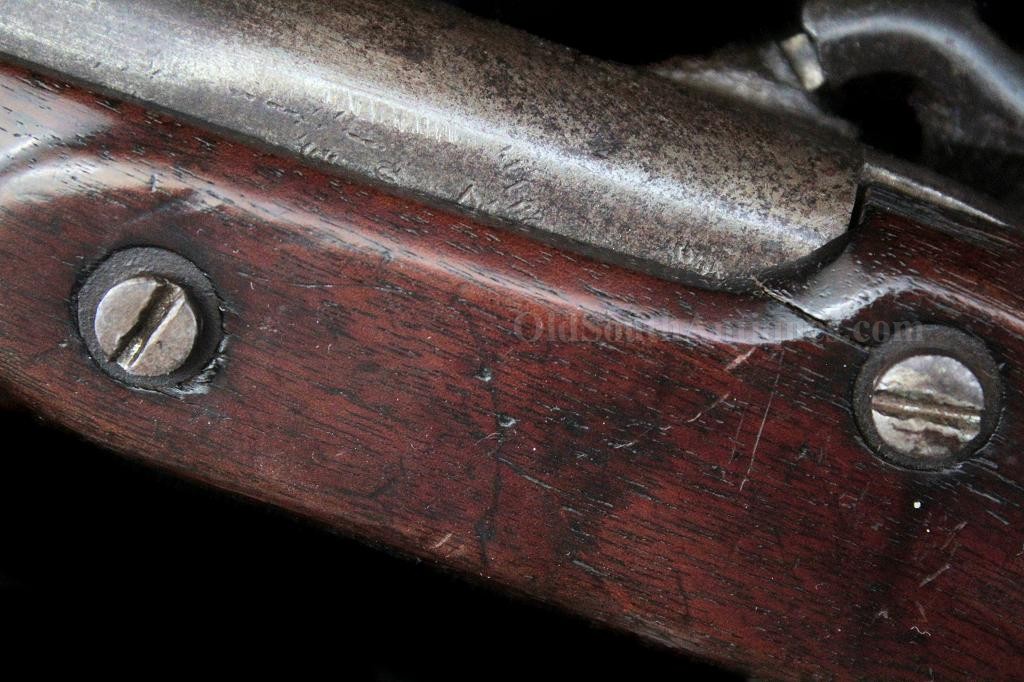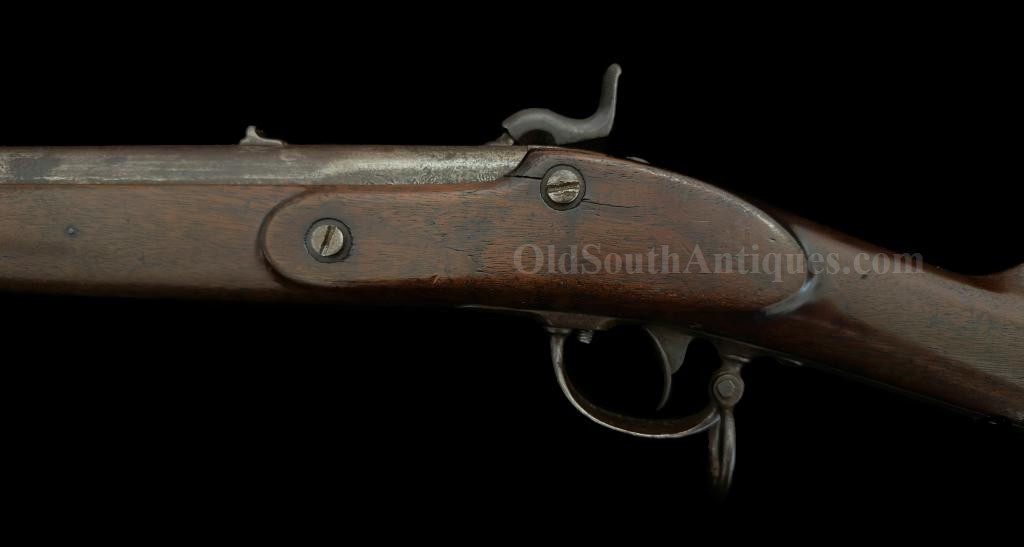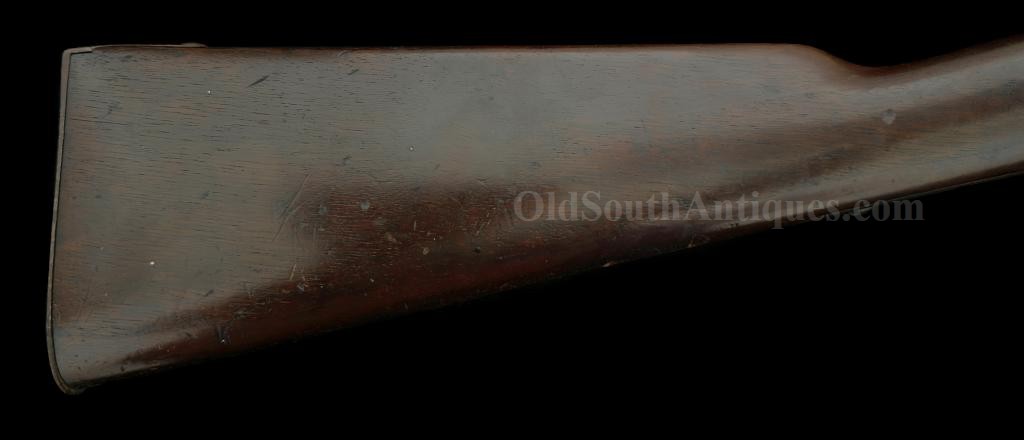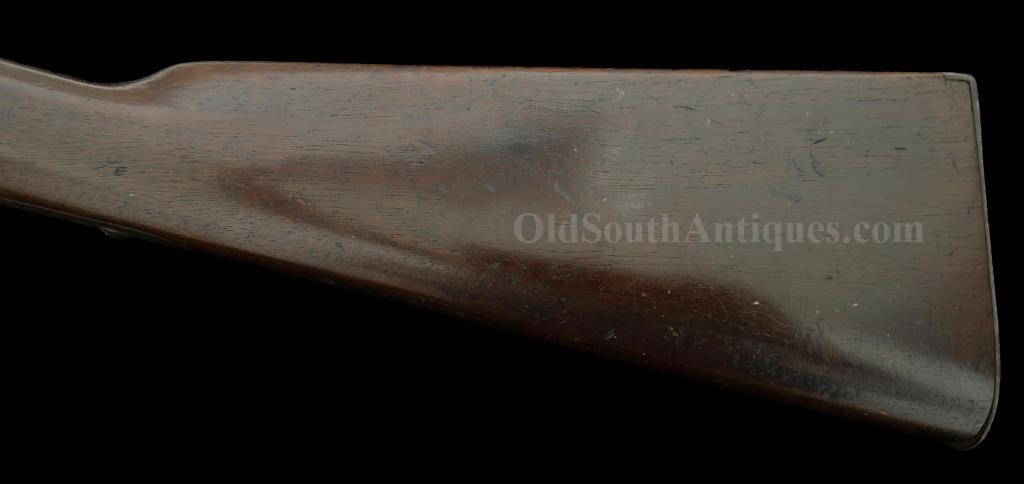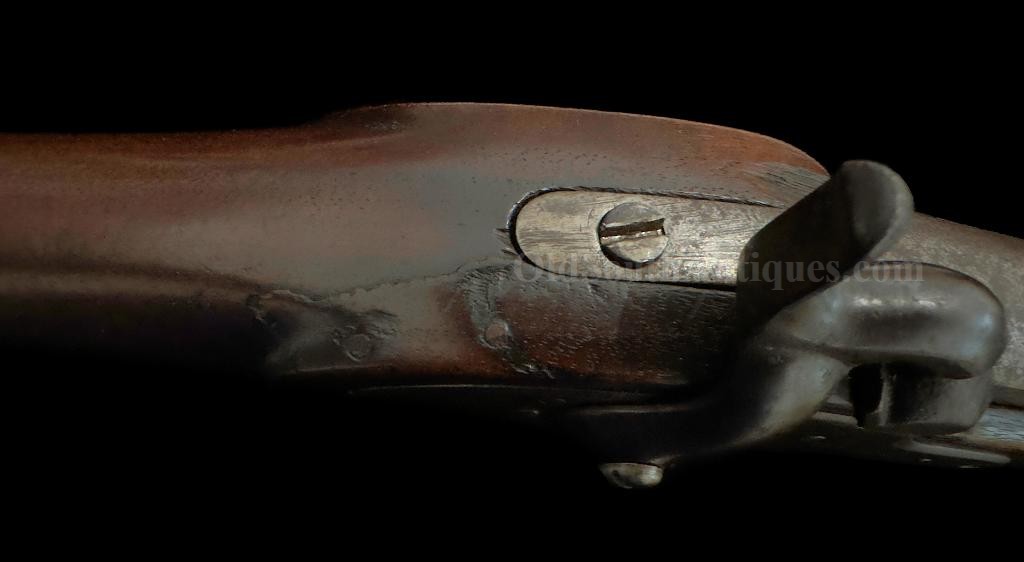
| Catalog | Past Items | Order Info | Terms/Conditions | About Us | Inventory Clearance |
The Bilharz, Hall, & Co. factory site is located on the east side of North Main Street, a short distance north of the Pittsylvania County, Virgina, Courthouse.
The Bilharz, Hall & Co. was established in 1862 by Candidus Bilharz, George Hall, and Coleman D. Bennett. Candidus Bilharz was, a native of Baden, Germany, and resident of Pittsylvania County since 1858; he became a naturalized citizen in 1859. Prior to the War he made harness, was a skilled machinist, and a whiskey distiller. He served as the factory's mechanical genius while George Hall managed the firm’s business, and Coleman Bennett financed the operation as a silent partner.
The firm produced two carbine types for the Confederacy. The first model that the company produced is today known as the "rising breech” carbine, because the breech literally rose from the barrel by means of an understock lever. By September 16, 1862 the Bilharz, Hall & Co. had sold 100 rising breech carbines to the Confederate Ordinance Department at the price of $45.00 each. The firm then made a contract with the Confederate Government for making a muzzleloading carbine.
The design of the Bilharz & Hall carbine generally conformed to the overall appearance of its pre-war US M-1854, with some minor changes. The U.S model was a single shot muzzle loading percussion carbine with a 22” long barrel that was secured by a single barrel band and screw through the breech plug tang. The musketoon had a .54 caliber bore that was rifled with 3 grooves. The gun had a swivel style ramrod secured by a pair of arms to a stud under the muzzle, and a small, three-leaf rear sight, similar to that used on the British Pattern 1856 cavalry carbine. The gun was iron mounted with the exception of a brass nose cap, and instead of the conventional carbine sling bar and ring on the stock opposite the lock, a sling ring was secured to the rear of the trigger guard bow. The Bilharz manufactured variant retained the iron-mounted design with a swivel ramrod, but dispensed with the adjustable rear sight, opting for a simple fixed one. The Bilharz gun was also bored to .58 caliber, making it compatible with the .577 and .58 ammunition used by most of the Confederate infantry. The Bilharz carbines initially utilized a brass nose cap like their US counterparts, but after about 350 were manufactured the brass piece was replaced with a pewter nose cap that remained in use through the end of the manufacturing period.
This carbine, serial number 81, is all matching and original. It is very well marked, but lacks a proof mark, though it had to have been proofed, since it has the CSA acceptance mark on the side of the breech. The lock, the barrel and the inside of the hammer are stamped C81. The inside of the lock is also marked with H 68 and the sear and tumbler both carry the 68. The underside of the barrel and the stock bed are marked VXX; a rather unique way of making the Roman numeral 15.
The stock is very nice, with few dings and retains relatively sharp edges. A chunk of wood was knocked out of the stock near the breech during its useful life, where it joins the backside of the lock and was put back into place right away using wooden pins to secure the same piece that came out.
The metal is smooth throughout, (with the slightest pinprick pitting at the breech) the lock works perfectly and the rifling remains strong. This is certainly among the better examples of this rare carbine.
Copyright © 2025 OldSouthAntiques.com All Rights Reserved.
Privacy Policy | Terms of Use
Powered by Web-Cat Copyright © 1996-2025 GrayCat Systems


